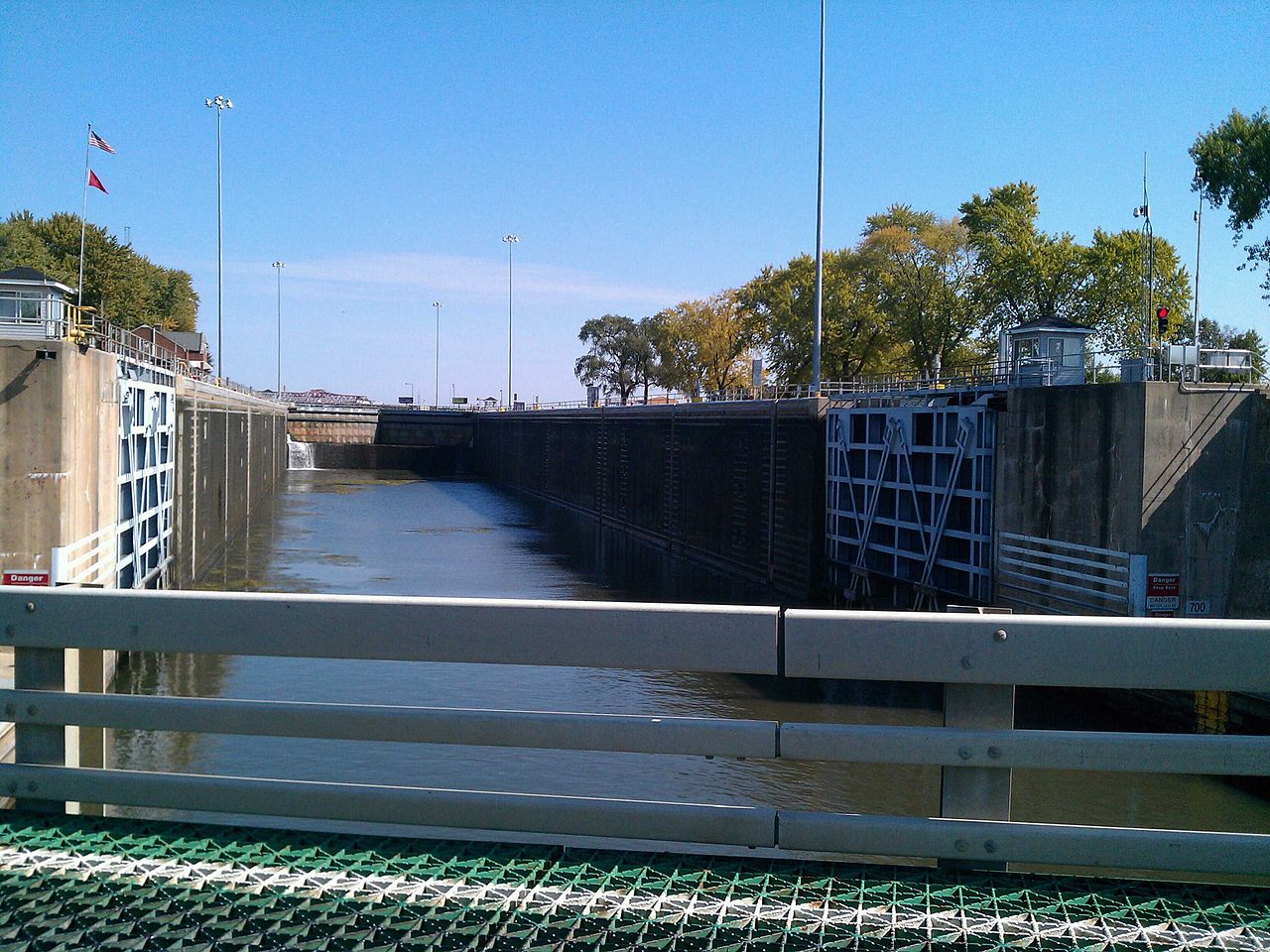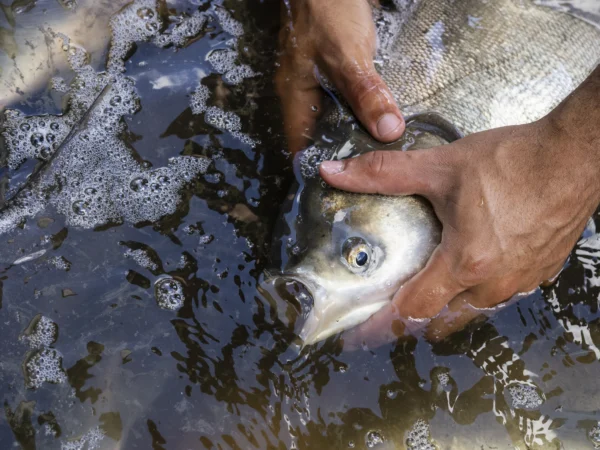
Price escalates to $778 million; 2025 earliest completion date
The cost to block Asian Carp in the Chicago waterways system has increased to $778 million from a previous estimate of $275 million, the Army Corps of Engineers announced last week.

T.J. O’Brien Lock and Dam, part of the Illinois Waterway. Photo by U.S. Army Corps of Engineers via wikimedia
The report — called a final environmental impact and feasibility study — will now be subject to public comment until December 24th before being finalized by a February 2019 deadline.
The recommended plan is called the “technology alternative” and was selected from a number of options. It includes an acoustic deterrent, a bubble curtain, an engineered channel and an electric barrier.
The work will be done at the Brandon Road Lock 30 miles from Lake Michigan. The site was identified in 2015 and is thought to be a logical choke point to stop the advancing carp “to the maximum extent possible,” according to the Army Corps.
Shipping in the Chicago waterways would continue though it could be slowed during construction of the modifications. The barge shipping industry has long-opposed any carp plan that would impact its operations and has said that current programs like commercial fishing have been effective at stopping carp.

United States Army Corps of Engineers logo, courtesy of U.S. federal government
The Army Corps said in a press release that it “is working closely with the State of Illinois and all Great Lakes stakeholders to ensure that an implementable and sustainable plan results from the study.”
The cost increase from earlier estimates is attributable to “engineering design changes” Corps spokesperson Allen Marshall told Great Lakes Now.
The federal government is responsible for 65 percent of the cost with the balance falling to Illinois or other non-federal partners not yet identified.
Michigan response
Michigan elected officials lead by Gov. Rick Snyder and U.S. Sens. Debbie Stabenow and Gary Peters have pushed hard for a federal response to Asian carp.

Michigan Governor Rick Snyder, Photo by Jim Greenhill via wikimedia cc 2.0
Snyder formed a Great Lakes state coalition to help offset the cost of operating a modified Brandon Road Lock to make it easier for Illinois to support the waterways modifications.
Reacting to the final report and its increased cost, Snyder spokesperson Jordan Kennedy told Great Lakes Now that the “administration wants to continue working with other states, including Illinois, to ensure strong protections at a reasonable cost are in place at the Brandon Road Lock and Dam.”
Stabenow and Peters have pressured the Corps to accelerate its timeline to complete and release the Brandon Road study.
Mixed conservation group response
Immediate reaction from environmental groups was mixed with Chicago’s Environmental Law and Policy Center (ELPC) questioning the increased cost.
“We are concerned to see that the construction cost has tripled and we will be looking closely at the causes for that increase,” Julie Jacobson told Great Lakes Now.
Jacobson is a Senior Fellow at ELPC.
Given Illinois’ historic reluctance to support previous plans, Jacobson said “we need to ensure that Illinois will fulfill its commitment to serve as the non-federal sponsor on this project without adding problematic contingencies”.

National Wildlife Federation Logo, image by nwf.org
The National Wildlife Federation in a statement expressed support for the plan including its increased costs.
“The investment in this project pales in comparison to the economic risk if Asian carp invade the Great Lakes,” Marc Smith said.
Smith is Director of Conservation in the federation’s Great Lakes office in Ann Arbor.
Smith said he would review the plan in detail “but at first glance this looks like the plan we need to protect our waters, our fisheries, our sport-fishing economy and our way of life.”
The American Waterways Operators representing the barge industry could not be reached for comment.
The fight to stop Asian carp from entering the Great Lakes hit a tipping point in 2009 when environmental DNA indicated the fish may have breached electric barriers in the waterways designed to keep them at bay.
Since, various infrastructure plans have been proposed but not implemented due to cost and pushback from shipping interests and the State of Illinois. Illinois has had an aggressive fishing program to reduce the carp population but it is not seen as an effective long-term solution.
Once finalized, the recent plan will require congressional action and funding which the Corps expects Congress to address in late 2019.
If approved, the Brandon Road project would be completed between 2025 and 2027 dependent on doing the work incrementally or on an expedited basis.
No public meetings are scheduled according to Army Corps spokesperson Marshall.
Featured Image: Brandon Road Lock and Dam Historic District, Photo by Bwheelerrtrm via wikimedia cc 3.0
1 Comment
-
Harvest these Asian Carp fish as food, discover which vegetables and herbs enhance the flavors then market these Asian Carp fish to provide nutrition for people and animals, or process these Asian Carp as fertilizer and useful products.




